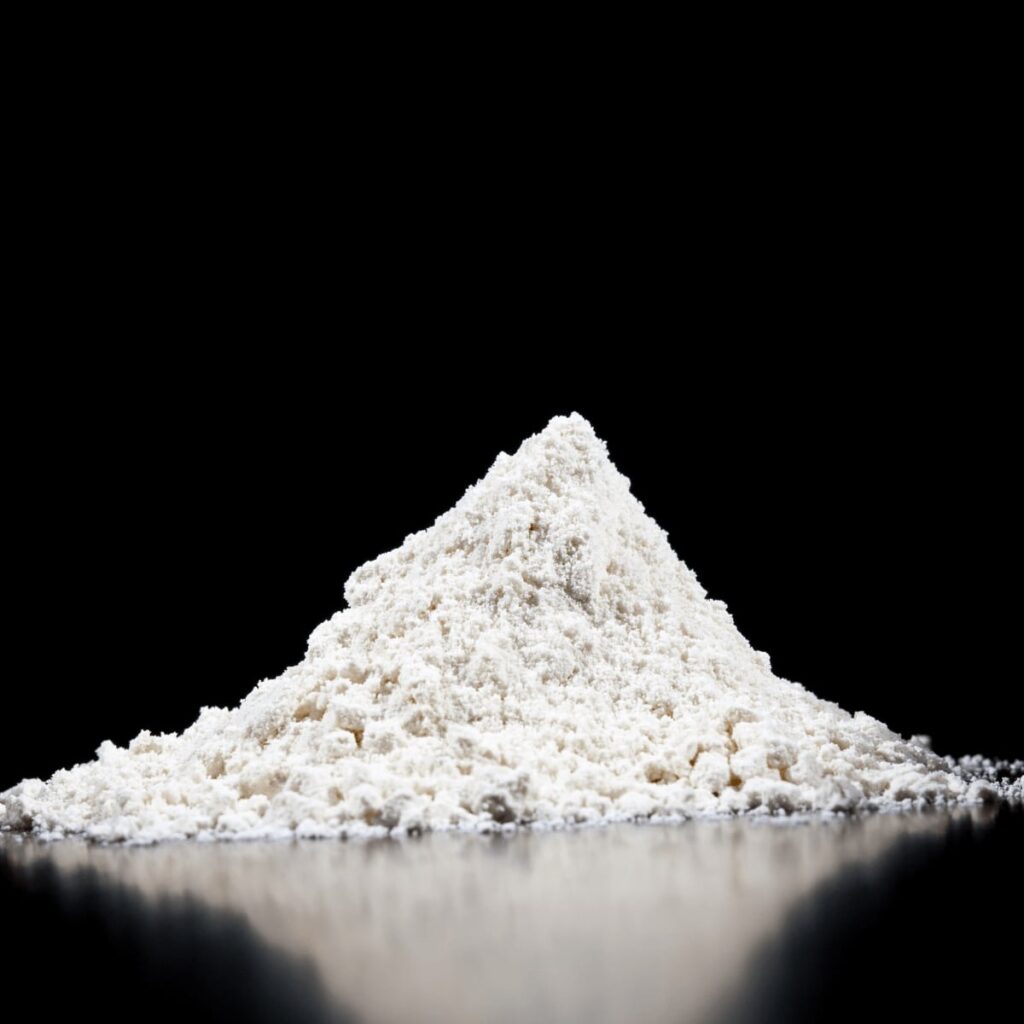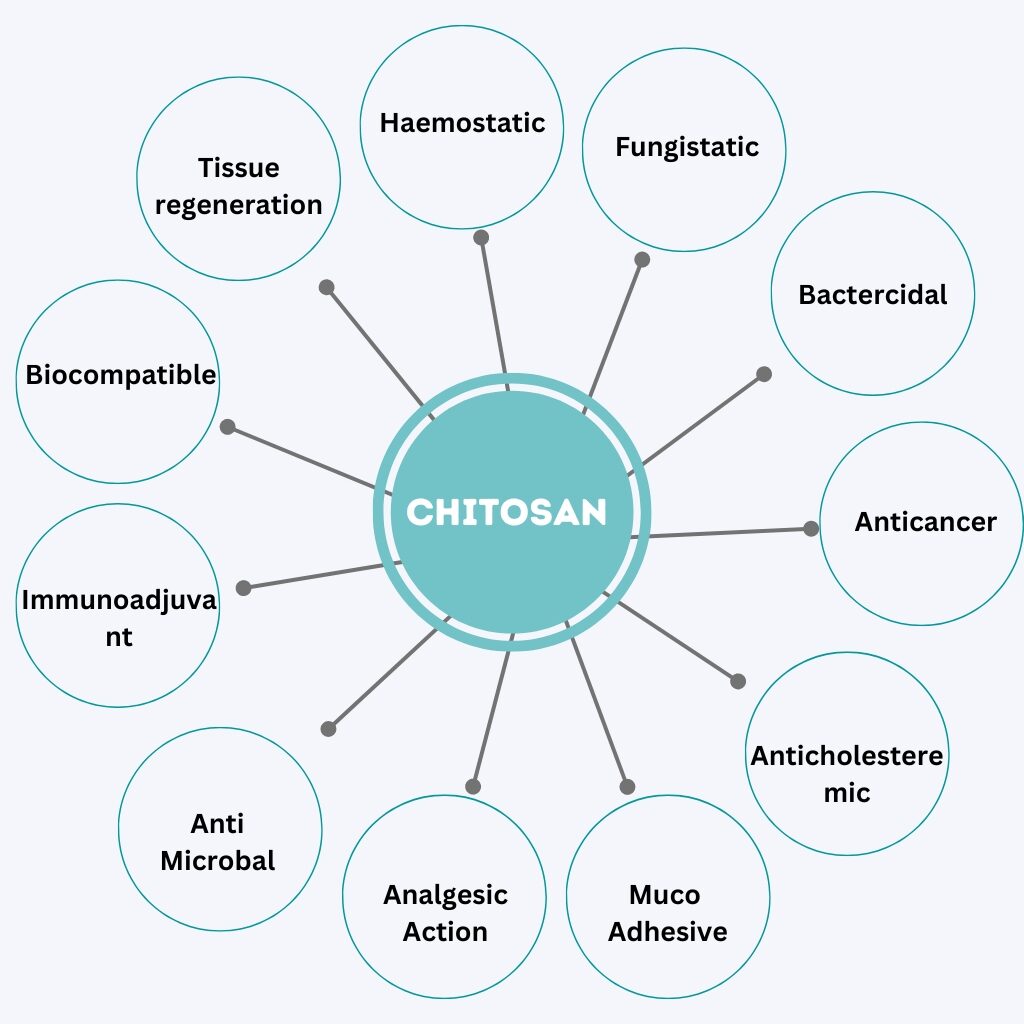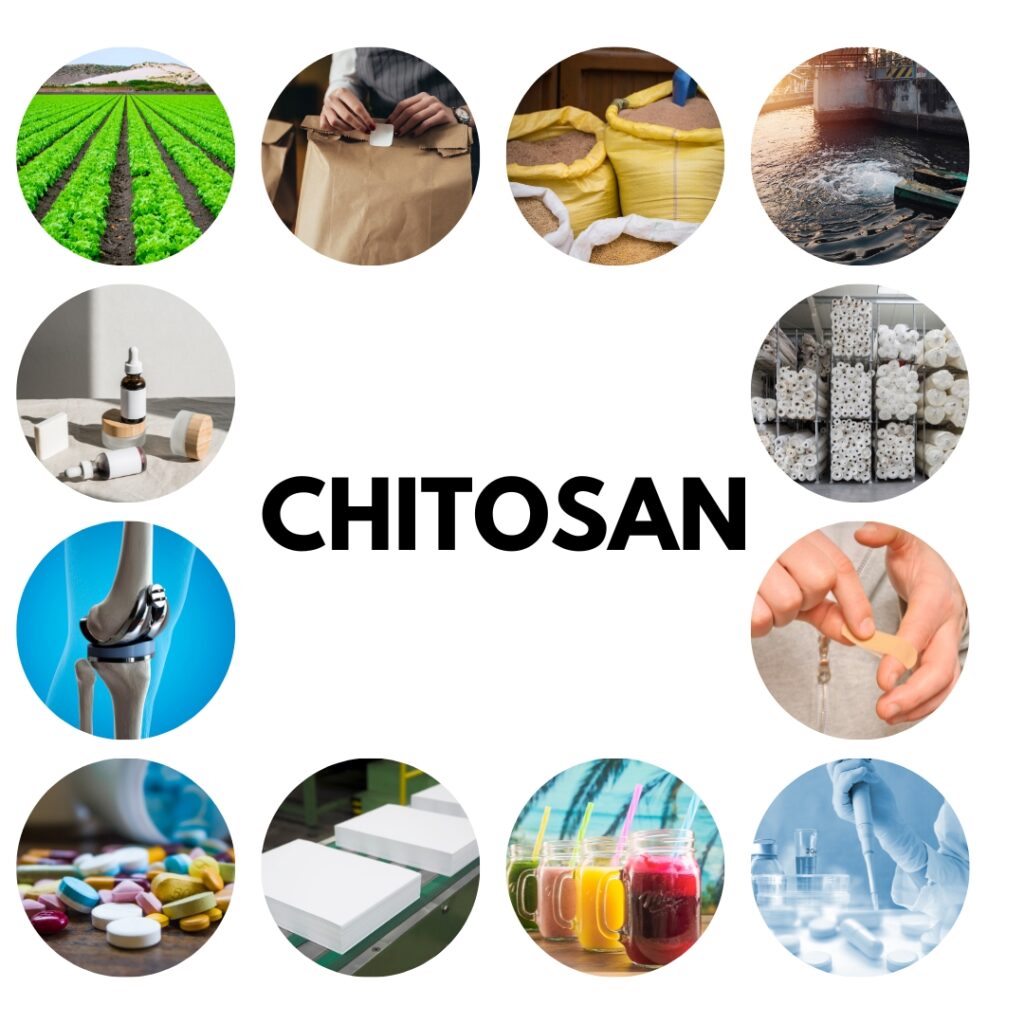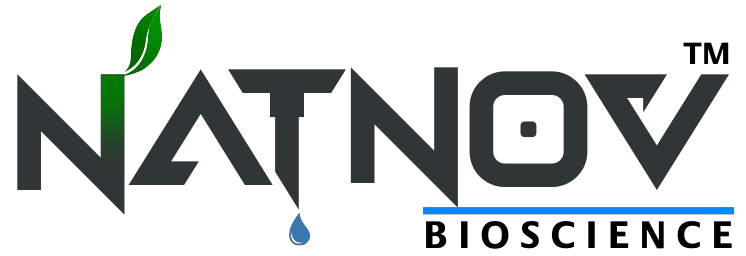CHITOSAN

Chitosan is a close derivative of chitin, the second-most prevalent biopolymer in the world.
The exterior skeleton of shellfish, such as crab, lobster, and shrimp, contains a sugar called chitosan. It is employed in the production of drugs and as medication. A fibre protein called chitosan may limit the amount of fat and cholesterol that the body absorbs from diet. When administered to wounds, it also facilitates blood clotting.
The primary structural element of the exoskeletons of crustaceans, such as crabs and shrimp, as well as the cell walls of fungus, is chitin, which naturally exists as organised macrofibrils. Chitin is often transformed into its deacetylated derivative, chitosan, for use in biomedical applications.
Deacetylation
The process of removing acetyl groups from chitin and replacing them with reactive amino groups is known as “deacetylation.”
Due to its high hydrogen bonding, chitin exhibits low reactivity and solubility in most solvents in its natural state. This can be overcome by deacetylation.
Functionalities
1. Biocompatible:
i. Natural polymer
ii. Safe and non-toxic
iii. Biodegradable
2. Binds to mammalian and microbial cells
3. Tissue regeneration
4. Accelerates formation of osteoblasts
5. Haemostatic
6. Fungistatic
7. Bactercidal
8. Antitumor or Anticancer
9. Anticholesteremic
10. Central nervous system depressant
11. Immunoadjuvant


Applications:
Chitosan is a biopolymer material technology that may be used alone or as a platform. It that may be developed to address issues in a variety of application areas. Chitosan’s flexibility is largely due to its key properties, which also include biocompatibility, non-toxicity, anti-microbial, hemeostatic effects, and many more. High-grade, mid-grade, and industrial grades of chitosan are commonly divided based on their purity, quality, and production and handling procedures.
Applications of High-Grade Chitosan in Medicine:
i. Biomedical
ii. Drug-delivery
iii. Medical device
iv. Pharmaceutical
v. Wound care
Applications in Food and Industry of Medium-Grade Chitosan:
i. Dietary supplement
ii. Food and beverages
iii. Agriculture
iv. Textiles
v. Cosmetics and Toiletries
vi. Animal feed addative
SUBSTITUTE
1. Application of chitosan in Technical Textile
- Chitosan in textiles' antibacterial finishes:
Natural fiber-based textile goods are easily attacked and harmed by microorganisms in moist environments. This might result in the spread of diseases and endanger people's health. As a result, antibacterial finishes for textile items are growing in popularity globally. Chitosan is a great substitute for the synthetic compounds that are used to enhance the antibacterial properties of textiles. Chitosan can be used in one of two ways to give fabrics an antibacterial treatment.
Natural fiber-based textile goods are easily attacked and harmed by microorganisms in moist environments. This might result in the spread of diseases and endanger people's health. As a result, antibacterial finishes for textile items are growing in popularity globally. Chitosan is a great substitute for the synthetic compounds that are used to enhance the antibacterial properties of textiles. Chitosan can be used in one of two ways to give fabrics an antibacterial treatment.
- Chitosan used in textile anti-wrinkle finishing:
Natural fibres like silk, cotton, and hemp have limited elasticity and wrinkling resistance qualities, which lead to wrinkling and permanent deformation. Therefore, any mechanical force—internal or external—can quickly harm their comfort and beauty. Chitosan, for instance, can be used as an anti-wrinkle treatment for textile items created specifically from natural fibres. The fibre micro-pores are filled with chitosan macromolecules, which establish a significant number of intermolecular hydrogen bonds between the hydroxyl and amino groups of chitosan and the polar residues of the fibre molecules. As a result, the amorphous portions of the fibres are strengthened, and their mobility is reduced, giving the fabric wrinkle resistance. Thus we can develop wrinkle resistance properties in the fabrics by applying a chitosan finish.
Natural fibres like silk, cotton, and hemp have limited elasticity and wrinkling resistance qualities, which lead to wrinkling and permanent deformation. Therefore, any mechanical force—internal or external—can quickly harm their comfort and beauty. Chitosan, for instance, can be used as an anti-wrinkle treatment for textile items created specifically from natural fibres. The fibre micro-pores are filled with chitosan macromolecules, which establish a significant number of intermolecular hydrogen bonds between the hydroxyl and amino groups of chitosan and the polar residues of the fibre molecules. As a result, the amorphous portions of the fibres are strengthened, and their mobility is reduced, giving the fabric wrinkle resistance. Thus we can develop wrinkle resistance properties in the fabrics by applying a chitosan finish.
- Chitosan in finishing and colouring textiles:
Chitosan was initially used as a color-deepening agent in the textile industry. Chitosan is a superior fixative for anionic dyes since it is a cationic polymer. Chitosan's ability to create a uniform coating on the surface of the fibre can be used to explain its level dyeing effect. The fiber's surface properties are enhanced, Coulomb repulsion between the fibre and anionic dyes is reduced, and dye absorption rate is significantly increased. The free amino group on the chitosan molecule is protonated in acidic conditions, which also adds to the deepening effect.
Chitosan was initially used as a color-deepening agent in the textile industry. Chitosan is a superior fixative for anionic dyes since it is a cationic polymer. Chitosan's ability to create a uniform coating on the surface of the fibre can be used to explain its level dyeing effect. The fiber's surface properties are enhanced, Coulomb repulsion between the fibre and anionic dyes is reduced, and dye absorption rate is significantly increased. The free amino group on the chitosan molecule is protonated in acidic conditions, which also adds to the deepening effect.
- Chitosan in textile antistatic finishing:
Garments cling to the skin because polyester materials are prone to static electricity. Employees in the industrial sector who work with delicate electronic equipment must wear antistatic clothes. Because NH3 + is a part of chitosan's molecular structure, chitosan-finished fibres have an ion-conducting activity in water that enables the fast discharge of static charges generated by friction. Electrical neutralisation takes place while the chitosan molecule's charge is in opposition to the surface charge of the fibre.
Garments cling to the skin because polyester materials are prone to static electricity. Employees in the industrial sector who work with delicate electronic equipment must wear antistatic clothes. Because NH3 + is a part of chitosan's molecular structure, chitosan-finished fibres have an ion-conducting activity in water that enables the fast discharge of static charges generated by friction. Electrical neutralisation takes place while the chitosan molecule's charge is in opposition to the surface charge of the fibre.
2. Application of chitosan in Agriculture
- Use of Chitosan as Controlled-Released factor:
The widespread practise of applying chemical fertilisers without discrimination is a serious issue. Nutrient delivery to plant needs and maintaining nutrient absorption relies on the prudent application of fertiliser and enhanced nutrient utilisation capabilities while reducing harmful toxicity.
Controlled-release fertilisers (CRF) are those that only temporarily delay the delivery of nutrients. However, management practises including storage, transportation, field supply, moisture content, and biological activity can have a significant impact on variables like the length of release. In recent times, chitosan use in controlled-release fertiliser is still in the early stages. However, due to its biodegradability, environmental friendliness, and other outstanding qualities, it is used as a wonderful fertiliser. Additionally, water and nutrients can permeate through the surface's porous structure. After being loaded with nitrogen components, the chitosan-based controlled-release microspheres could be released gradually into the soil to fulfil the nutritional needs of plants at different stages, increase the rate at which fertiliser is used, and decrease the loss of chemical fertiliser.
The widespread practise of applying chemical fertilisers without discrimination is a serious issue. Nutrient delivery to plant needs and maintaining nutrient absorption relies on the prudent application of fertiliser and enhanced nutrient utilisation capabilities while reducing harmful toxicity. Controlled-release fertilisers (CRF) are those that only temporarily delay the delivery of nutrients. However, management practises including storage, transportation, field supply, moisture content, and biological activity can have a significant impact on variables like the length of release. In recent times, chitosan use in controlled-release fertiliser is still in the early stages. However, due to its biodegradability, environmental friendliness, and other outstanding qualities, it is used as a wonderful fertiliser. Additionally, water and nutrients can permeate through the surface's porous structure. After being loaded with nitrogen components, the chitosan-based controlled-release microspheres could be released gradually into the soil to fulfil the nutritional needs of plants at different stages, increase the rate at which fertiliser is used, and decrease the loss of chemical fertiliser.
- Chitosan utilization against pest and pathogens:
30 businesses have registered more than 30 different varieties of chitosan-based biological insecticides in various nations (China, Pakistan, Canada, and India). The main dose forms are liquid, powder, suspension, and micro-emulsion, among others. Recent research revealed that chitosan is used to combat many diseases and agricultural pests, is synthesised from marine sources.
30 businesses have registered more than 30 different varieties of chitosan-based biological insecticides in various nations (China, Pakistan, Canada, and India). The main dose forms are liquid, powder, suspension, and micro-emulsion, among others. Recent research revealed that chitosan is used to combat many diseases and agricultural pests, is synthesised from marine sources.
- Chitosan utilisation as pesticides:
Agriculture science had made tremendous advancements over the last century, introducing pesticides for quicker pest reduction. Moreover, developed countries realised the disadvantages during the initial phases but continued to use pesticides at a high level.
In this regard, chitosan has been used in several agricultural industries and as a pesticide modification. Since lignocellulosic biomass advantages are taken into account, chitosan is presumed to be a naturally green feedstock. Several research over the past several years have clarified the creation and application of chitosan nano-particles to deliver the herbicide.
Agriculture science had made tremendous advancements over the last century, introducing pesticides for quicker pest reduction. Moreover, developed countries realised the disadvantages during the initial phases but continued to use pesticides at a high level. In this regard, chitosan has been used in several agricultural industries and as a pesticide modification. Since lignocellulosic biomass advantages are taken into account, chitosan is presumed to be a naturally green feedstock. Several research over the past several years have clarified the creation and application of chitosan nano-particles to deliver the herbicide.
- Chitosan advancement in herbicides:
The productivity loss of plant species has been greatly reduced by the use of herbicide in modern agriculture.
The use of natural polysaccharides like chitosan as a means of managing these problems. The release of herbicides and their connection to the soil are replaced by chitosan nanoparticles. In addition, it is seen that chitosan nanoparticles reduced negative effects and improved herbicide responsiveness.
The productivity loss of plant species has been greatly reduced by the use of herbicide in modern agriculture. The use of natural polysaccharides like chitosan as a means of managing these problems. The release of herbicides and their connection to the soil are replaced by chitosan nanoparticles. In addition, it is seen that chitosan nanoparticles reduced negative effects and improved herbicide responsiveness.
3. Application of chitosan in Cosmetics
Chitosan has a variety of biologically active functional qualities, such as immunoadjuvant, analgesic, antiacid, antiulcer, fungistatic, wound-healing, and anticancer capabilities. Chitosan has traditionally been utilised as a bioactive component and excipient in the cosmetic sector. This is made feasible by taking use of the low toxicity, biocompatibility, and biodegradability of chitosan.
- Chitosan as Ingredient in Skin Care Products:
Chitosan is a wonderful component for skin care products because of its beneficial humectant, cleaning, antioxidant, and protective properties. Chitosan has been widely used, in particular, as an antiaging and moisturising agent, in UV protection, in skin washing, and as a booster of other important functions of the skin (protection, absorption, thermal regulation, defense, reservation, and synthesis). Chitosan's low skin penetration, which restricts its action mechanism in the majority of formulations to the skin/external environment interface, is one of the most significant elements of its application in skin care products.
Chitosan is a wonderful component for skin care products because of its beneficial humectant, cleaning, antioxidant, and protective properties. Chitosan has been widely used, in particular, as an antiaging and moisturising agent, in UV protection, in skin washing, and as a booster of other important functions of the skin (protection, absorption, thermal regulation, defense, reservation, and synthesis). Chitosan's low skin penetration, which restricts its action mechanism in the majority of formulations to the skin/external environment interface, is one of the most significant elements of its application in skin care products.
- Applications of Chitosan as a Humectant and Moisturizer:
Moisturizers raise the water content of the skin, enhancing skin suppleness and smoothness, whereas humectants are cosmetic formulations or substances that help to increase the water content on the upper layers of the skin. Chitosan's cationic nature, which enables its adsorption on the negatively charged skin surface, is used in its function as a humectant. Chitosan can really adsorb on negatively charged skin surfaces, boosting stratum corneum water content and enhancing cell membrane fluidity.
Moisturizers raise the water content of the skin, enhancing skin suppleness and smoothness, whereas humectants are cosmetic formulations or substances that help to increase the water content on the upper layers of the skin. Chitosan's cationic nature, which enables its adsorption on the negatively charged skin surface, is used in its function as a humectant. Chitosan can really adsorb on negatively charged skin surfaces, boosting stratum corneum water content and enhancing cell membrane fluidity.
- Skin Aging:
Chitosan has been shown to be a very effective component for addressing the issue of skin ageing. In reality, the capacity of chitosan to form films upon application on the skin surface, particularly high-molecular-weight polymers, reduces cutaneous water loss and improves the mechanical characteristics of the skin (elasticity and smoothness), playing a crucial function as a moisturising agent.
It is possible to minimise the unfavourable effects brought on by prolonged exposure to UV radiation by taking use of chitosan's biological activity. For instance, by stimulating the pathways for collagen formation, chitosan treatment can help to lessen the macroscopic and histological damage to skin. Chitosan can also increase the activity of several antioxidant enzymes, reduce the synthesis of postinflammatory cytokines, and increase the moisture content of the skin. In order to stop UV-induced skin drying, epidermal hyperplasia, and wrinkle development, chitosan can be used. Chitosan's ability to boost the activity of specific antioxidant enzymes and reduce the generation of pro-inflammatory cytokines, which in turn prevents the breakdown of collagen fibres, makes this feasible.
Chitosan has been shown to be a very effective component for addressing the issue of skin ageing. In reality, the capacity of chitosan to form films upon application on the skin surface, particularly high-molecular-weight polymers, reduces cutaneous water loss and improves the mechanical characteristics of the skin (elasticity and smoothness), playing a crucial function as a moisturising agent. It is possible to minimise the unfavourable effects brought on by prolonged exposure to UV radiation by taking use of chitosan's biological activity. For instance, by stimulating the pathways for collagen formation, chitosan treatment can help to lessen the macroscopic and histological damage to skin. Chitosan can also increase the activity of several antioxidant enzymes, reduce the synthesis of postinflammatory cytokines, and increase the moisture content of the skin. In order to stop UV-induced skin drying, epidermal hyperplasia, and wrinkle development, chitosan can be used. Chitosan's ability to boost the activity of specific antioxidant enzymes and reduce the generation of pro-inflammatory cytokines, which in turn prevents the breakdown of collagen fibres, makes this feasible.
- UV Guard:
Skin photoaging can be caused by prolonged exposure to UV light, which can also cause oxidative stress and inflammatory imbalance. It is important to remember that exposure to UV radiation contributes to the development of skin cancer.
Chitosan's UV-visible spectrum exhibits absorption bands at wavelengths below 400 nm. This makes it feasible to employ chitosan as a suitable component of sunscreen cosmetics since UV-related solar radiation has wavelengths between 320 and 400 nm for UV-A and 290 to 320 nm for UV-B, respectively.
Skin photoaging can be caused by prolonged exposure to UV light, which can also cause oxidative stress and inflammatory imbalance. It is important to remember that exposure to UV radiation contributes to the development of skin cancer. Chitosan's UV-visible spectrum exhibits absorption bands at wavelengths below 400 nm. This makes it feasible to employ chitosan as a suitable component of sunscreen cosmetics since UV-related solar radiation has wavelengths between 320 and 400 nm for UV-A and 290 to 320 nm for UV-B, respectively.
- Skin purification:
The goal of skin-cleansing methods is to eliminate from the skin any substance that could be applied to it or deposited on it by ambient air or cosmetics. Chitosan and certain of its derivatives can be used as skin cleansers by taking use of their cationic nature to provide carriers for the active chemicals that help with the cleaning process.
The goal of skin-cleansing methods is to eliminate from the skin any substance that could be applied to it or deposited on it by ambient air or cosmetics. Chitosan and certain of its derivatives can be used as skin cleansers by taking use of their cationic nature to provide carriers for the active chemicals that help with the cleaning process.
- Antibacterial Action:
The most widely accepted explanation for the antibacterial action of chitosan when applied to skin is that the positively charged chitosan interacts with the negatively charged bacterial cell wall, causing a shrinking process that weakens the cell wall. The bacterial cell is then rendered inactive, which is highly reliant on the molecular weight and charge density of the chitosan chains. In fact, the antibacterial efficacy of chitosan increases with its molecular weight.
The most widely accepted explanation for the antibacterial action of chitosan when applied to skin is that the positively charged chitosan interacts with the negatively charged bacterial cell wall, causing a shrinking process that weakens the cell wall. The bacterial cell is then rendered inactive, which is highly reliant on the molecular weight and charge density of the chitosan chains. In fact, the antibacterial efficacy of chitosan increases with its molecular weight.
- Chitosan as an Ingredient in Hair Care Products:
Chitosan is an excellent component for hair care products as well as skin care products, boosting hair moisture, repairing damaged hair, and giving hair a healthy sheen. Chitosan's capacity to increase the rheological characteristics of cosmetic formulations or the adherence of certain components to the hair is primarily responsible for this extensive use of the substance.
The conditioning procedure is one of the most popular components of hair treatment where cationic polymers, such chitosan, are utilised. Chitosan and its cationic derivatives, in particular, interact with the negatively charged keratin surface of damaged hair fibres to generate transparent elastic films that enhance hair softness and strength while limiting damage brought on by mechanical, thermal, or environmental factors.
Chitosan is an excellent component for hair care products as well as skin care products, boosting hair moisture, repairing damaged hair, and giving hair a healthy sheen. Chitosan's capacity to increase the rheological characteristics of cosmetic formulations or the adherence of certain components to the hair is primarily responsible for this extensive use of the substance. The conditioning procedure is one of the most popular components of hair treatment where cationic polymers, such chitosan, are utilised. Chitosan and its cationic derivatives, in particular, interact with the negatively charged keratin surface of damaged hair fibres to generate transparent elastic films that enhance hair softness and strength while limiting damage brought on by mechanical, thermal, or environmental factors.
